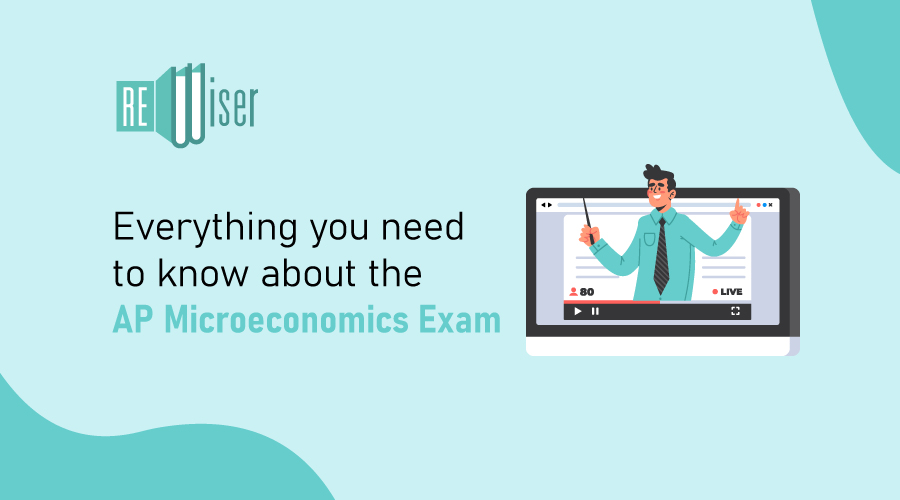
Everything you need to know about the AP Microeconomics Exam
The AP Microeconomics exam is a year-end test about how people and businesses make choices in the market. Given by the College Board, high schoolers can get college credit if they do well. The proper study helps in acing this test and understanding economics. It’s useful for students preparing for the test or those just curious about it. The AP Microeconomics exam is a big test for high schoolers about how individuals and businesses act in the economy. Given by the College Board, students can earn college credits with a good score. It covers a year’s study on topics like buying, selling, and market choices. Preparing well can lead to success and a deep understanding of these topics. Whether taking the test or just curious, it’s an important exam to know about.
Tables of Contents:
What is Microeconomics AP?
Exam Structure of AP Economics
Multiple Choice Section
Key Topics Covered
Exam Tips
How to prepare?
Final Thoughts
What is Microeconomics AP?
AP Microeconomics is a school course about how people and companies decide about money. Students learn about buying, selling, price changes, and what the government does in the market. There’s a test at the end. Good scores let students earn college points or avoid basic college classes, but it varies by college.
Exam Structure of AP Economics:
The AP Microeconomics exam structure is divided into two main sections: MCQs and free-response questions. Here’s a breakdown of the exam structure:
Multiple Choice Section –
- Percentage of Exam Score: 66%
- Number of Questions: 60
- Time Allotted: 70 minutes
This section assesses student’s knowledge and understanding of microeconomics principles, theories, and applications. Questions often involve interpreting graphs, data, and scenarios.
Free Response Section –
- Percentage of Exam Score: 33%
- Number of Questions: 3 (1 long and 2 short questions)
- Time Allotted: 60 minutes
This section tests students’ ability to implement their knowledge in a more open-ended manner. This could involve drawing graphs, explaining concepts in detail, or analyzing specific economic scenarios. The long question typically requires more in-depth analysis, while the shorter ones are more focused.
Students are advised to manage their time efficiently, especially in the free-response section, to ensure they fully address every part of the questions.
Key Topics Covered:
The AP Microeconomic course and exam covers various topics, including –
Basic Economic Concepts – Scarcity and the economic problem, opportunity cost, production possibilities curve, comparative advantage, absolute advantage, specialization, and trade.
The Nature and Function of Product Markets – Supply and demand, equilibrium, changes in equilibrium, price elasticity of demand and supply, consumer choice theory and utility maximization, production and costs, profit maximization.
Firm Behavior and Market Structure – Characteristics and outcomes of different market structures, perfect competition, monopolistic competition, oligopoly, monopoly, factors affecting market competitiveness, pricing, and output decisions in different market structures.
Market Failure and the Role of Government – Externalities and public policy remedies, public goods and common resources, tax incidences and deadweight loss, income distribution and equity.
Role of Institutions – Property rights and the role of contracts in markets, the role of government regulation, antitrust policies, and property rights in the functioning of markets.
For students preparing for the AP economics micro exam, a thorough understanding of these topics, including the ability to interpret relevant graphs and data, is highly important.
Exam Tips:
Practice past papers – this can give you a feel for the type of questions asked and the depth of understanding required.
Understand graphs – Microeconomics relies heavily on graphs to represent concepts. Make sure you can both interpret and draw them.
Stay updated – the college board occasionally updates the exam’s format or content areas. Be sure to review their resources each year.
Manage your time – particularly in the free-response section, ensure you allocate time wisely so you can address each part of every question.
How to prepare?
Look for official study material – ReWiser.com provides a range of study materials, including sample questions and exam descriptions.
Review books – there are various AP microeconomics review books available that offer concise reviews of topics and practice exams.
Join a study group – discussing and explaining concepts to peers can cement your understanding and expose you to different perspectives.
Scoring in AP Microeconomics –
The scores in AP exams range from 1 to 5, with colleges typically giving credit for scores of 3 and above.
If you need additional support for your AP Microeconomics Exam Syllabus, then you can contact Team ReWiser: Contact Us – ReWiser
Final thoughts AP Microeconomics test lets students show what they know and possibly get college credit. By studying well, students can feel ready for the test. It’s about more than just a good score; understanding the AP Subject can help in many areas of life. Best of luck!

